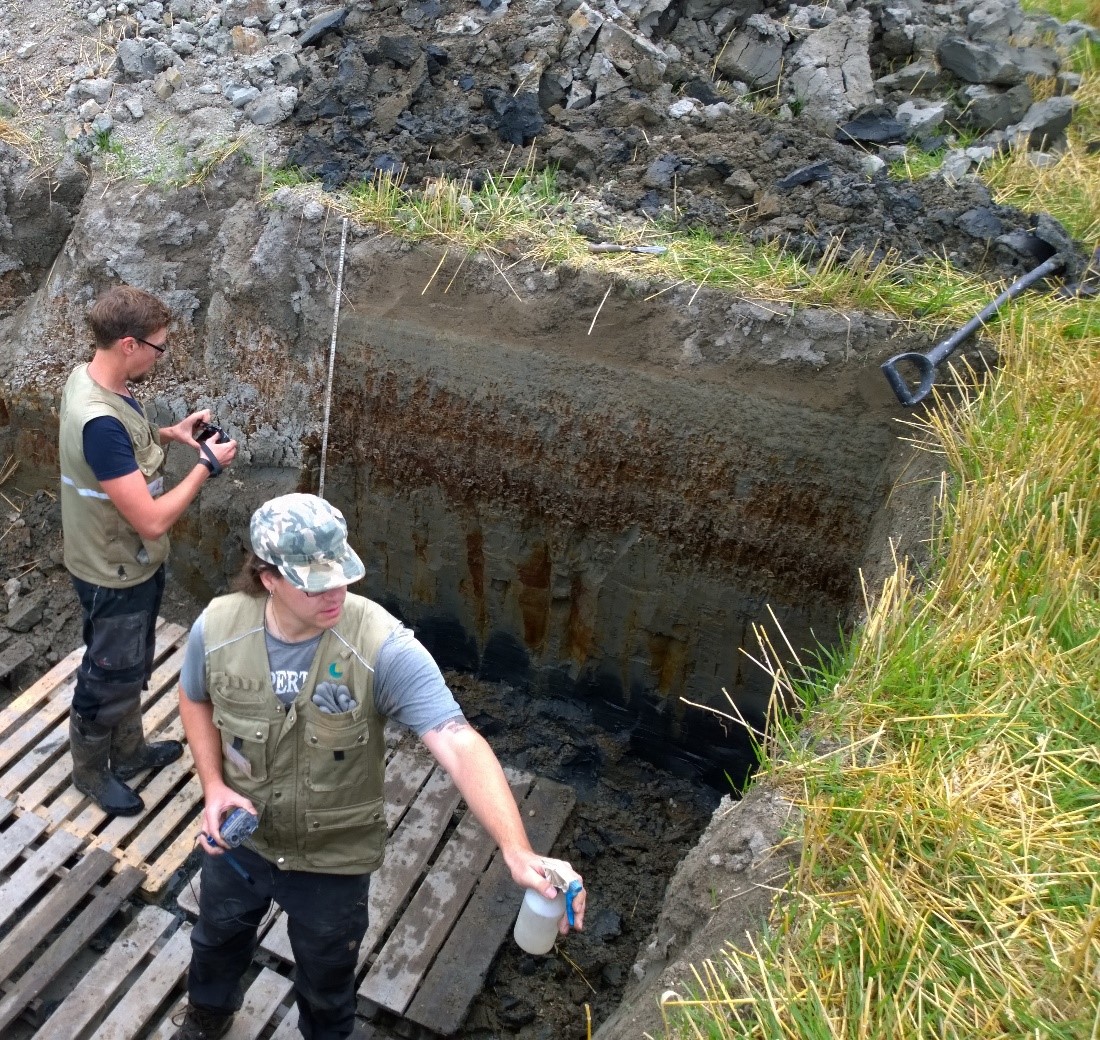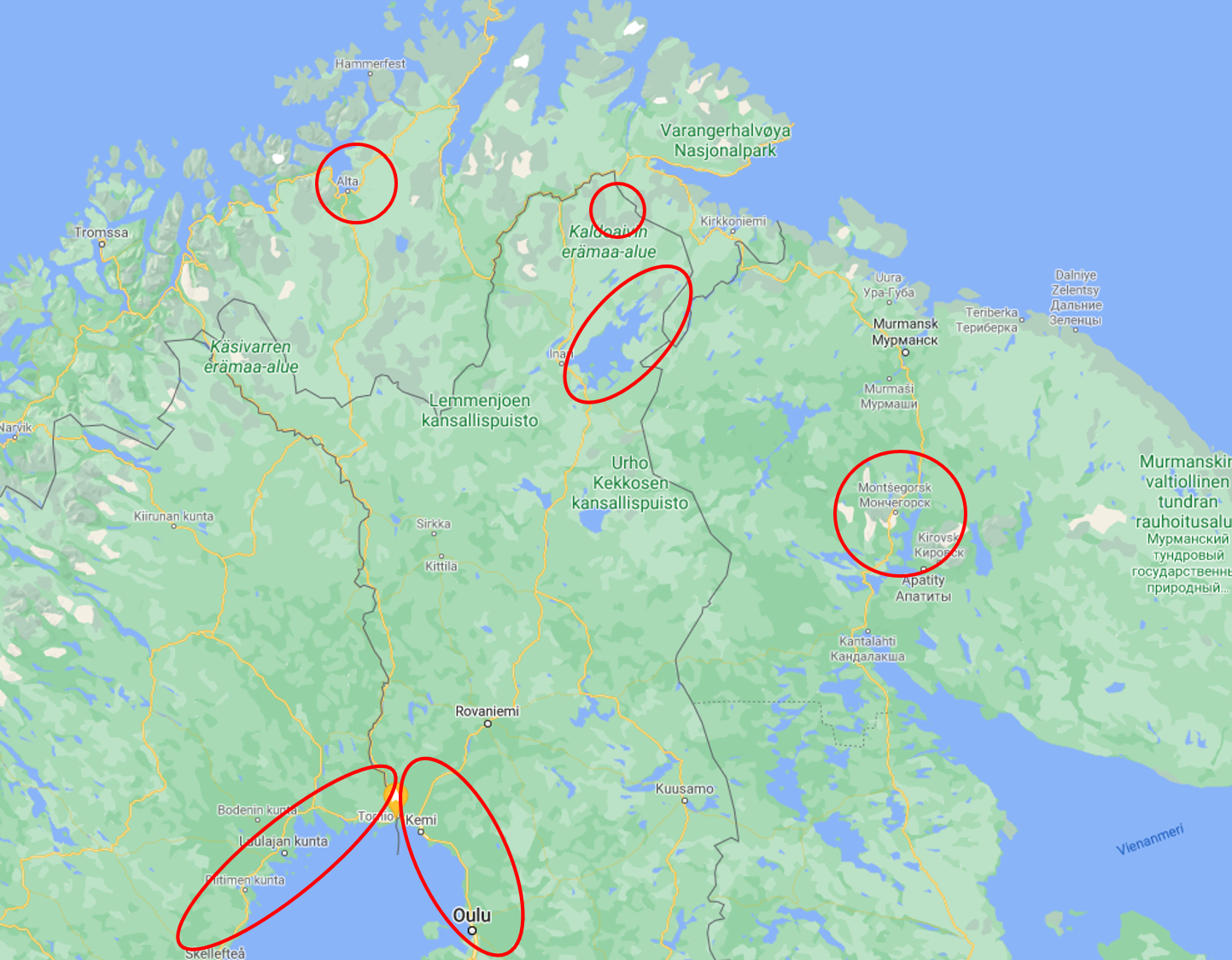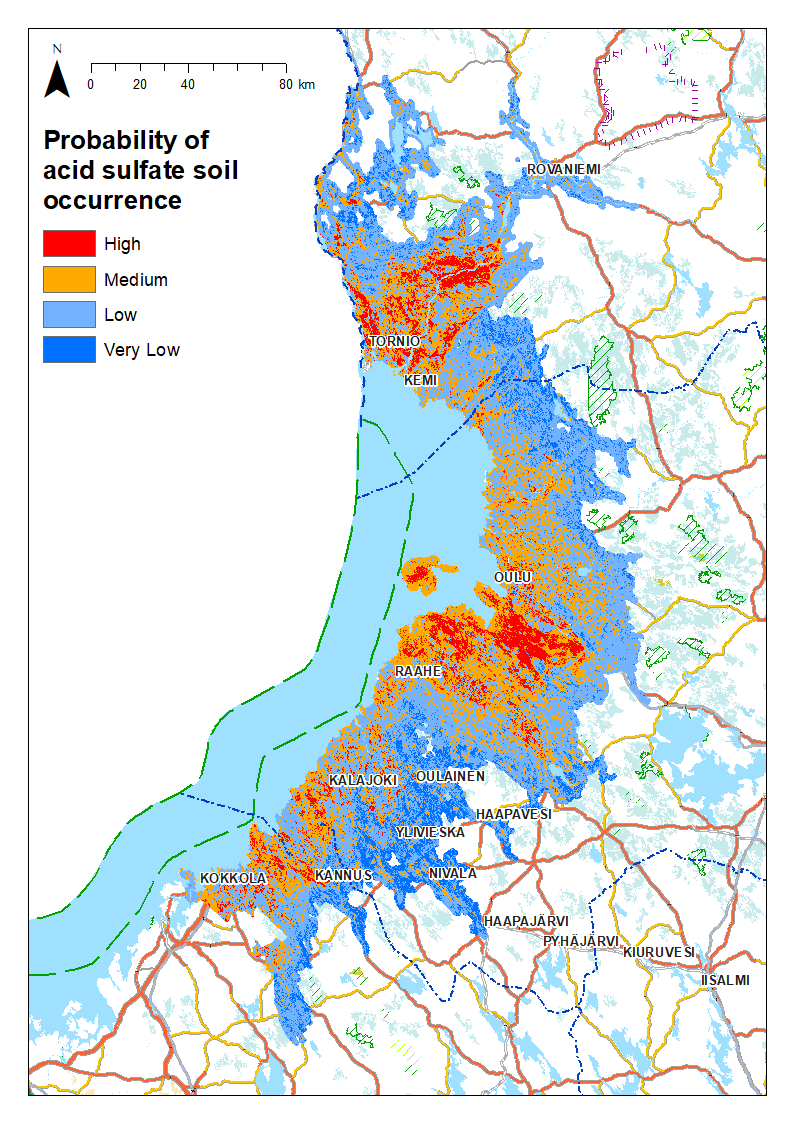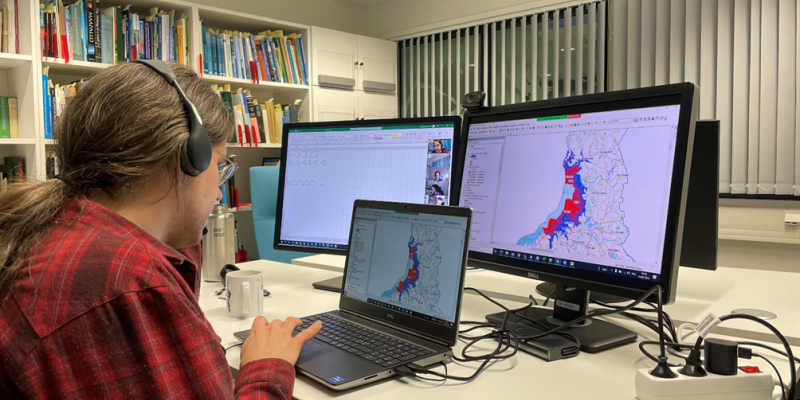ISRIC supports geological surveys of Norway, Sweden and Finland to map acid sulfate soils
From 15 to 22 February 2022, ISRIC facilitated a digital soil mapping workshop for seven scientists from the geological surveys of Norway, Sweden and Finland. The workshop focused on mapping the occurrence of acid sulfate soils in these countries and is part of the “HazArctic – Geo-Bio Hazards in the Arctic Region” project.
Acid sulfate soils occur naturally in some waterlogged places. When disturbed or exposed to air, they can react to create sulfuric acid which has potential to pollute soil and water resources, damage structures or harm animals and plants.
“Acid sulfate soils are the nastiest soils in the world because they are capable of mobilization of acidity and potentially toxic metals into stream waters,” said Anton Boman, senior scientist at Geological Survey of Finland (GTK) and a work package leader on the HazArctic project. “We are mapping the occurrence of acid sulfate soils in order to give environmental authorities the necessary tools for proper management of these harmful soils.”


ISRIC is providing scientific and technical guidance on digital soil mapping to the HazArctic project team. In Finland, the occurrence of acid sulfate soils has previously been mapped in a conventional way, drawn by hand in a GIS software. By implementing digital soil mapping, it will be possible to update the occurrence maps more quickly as more data is collected, and it will also allow for validation of the produced maps.
ISRIC Digital Soil Mapping Specialists Dr Bas Kempen and Dr Laura Poggio facilitated the workshop this month.
“We are excited to continue working with the HazArctic team and share our expertise in digital soil mapping with them,” said Bas.
The collaboration between ISRIC and the HazArctic project started in June 2021 with a first training course on digital soil mapping methods which covered geostatistics, soil and covariate data preparation, and machine learning for digital soil mapping. The collaboration continued this month in a hands-on workshop in which ISRIC assisted the HazArctic team in developing maps of presence of acid sulfate soils for the project regions.

Learn more about ISRIC’s capacity building resources and community of practice for soil information professional.
If you are looking to participate in a digital soil mapping training, consider registering for the ISRIC Spring School.
HazArctic is a co-operation project between Geological Surveys from Finland, Sweden and Norway (GTK, SGU, NGU), Natural Resources Institute Finland (LUKE) as well as Geological Institute and Mining Institute from the Federal Research Centre “Kola Science Centre of the Russian Academy of Sciences”. It is funded by Kolarctic CBC 2014-2020 program, EU, Russia, Norway, Sweden and Finland with the contribution from the project partners.
